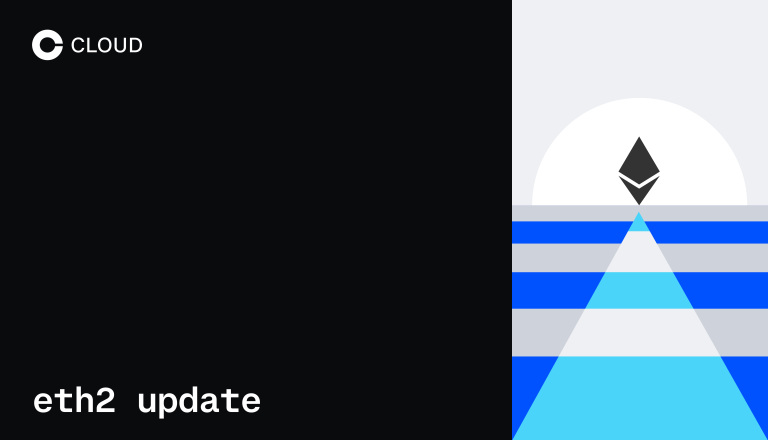eth2 update 015
January 26, 2022
We look at the EIP to upgrade consensus to PoS, the timing of the Altair upgrade, and the roadmap for the eth2 merge.

Today our Protocol Specialist Viktor Bunin covers eth2’s traction, EIP‐3675: Upgrading consensus to PoS, the Altair upgrade timing, and the merge roadmap.
eth2’s traction
Eth2 is continuing to grow! There is now:
6.4m ETH deposited, equivalent to $15bn USD—roughly 5.5% of all ETH
200k+ active validators
An average validator balance of 33 ETH
Fun fact: there are four validators that have never missed an attestation, two of which are run by Daniel Novy of MIT Media Lab
EIP-3675: upgrading consensus to proof-of-stake
The latest spec for hot‐swapping Ethereum’s PoW consensus to PoS was published by Mikhail, Danny, and Vitalik on July 22nd, 2021. As previously communicated by Ethereum researchers, this spec attempts to make as few changes as possible to the consensus and client software. This is in order to reduce the complexity and risk of the merge, while shortening the timeline of getting it done.
By and large, the changeover to PoS should be smooth for most users, contracts, and services (since the EVM will remain unchanged), but there are a few possible exceptions. Namely, anything that heavily relies on the PoW consensus may be impacted, such as dapps or tools that perform block validation or validate merkle proofs.
eth2 Altair upgrade
Altair, eth2’s first hard fork, is coming! There have been three relatively successful (although not perfect) devnet launches so far, and a date is being set now to deploy Altair on Pyrmont. The current projection is that Pyrmont will upgrade to Altair on August 19th, in epoch 61650 (slot 1972800).
Assuming the upgrade is successful, we are estimating that Altair may hit mainnet sometime in mid‐September.
Merge roadmap
Work on the merge has been piecemeal to date with many workstreams running concurrently, but, after the London fork on eth1 and Altair fork on eth2, the streams will become a confluence. The client teams will begin working together to apply the merge strategy, including proper fork‐transition logic.
One of the big strengths, but also challenges, is inclusivity. The more clients that attempt to support the merge, the more combinations will need to be attempted and tested to ensure there are no bugs or inconsistencies in results. Each eth1 client needs to work with each eth2 client!
According to Tim Beiko there are three possible merge paths, "based on the amount of non‐consensus work expected on the testnets (e.g. JSON RPC APIs, infrastructure support, etc.):
Merge ASAP (unlikely unless there was a security reason to do so);
Have a network upgrade where only the difficulty bomb gets delayed and merge shortly after;
Have a network upgrade which introduces new EIPs and give the community an extended period of time to interact with the testnets."
Although there have been calls to merge the networks in 2021, our optimistic estimate is that it will occur sometime in Q1 2022, with a possible delay into Q2.
—Viktor Bunin, Protocol Specialist